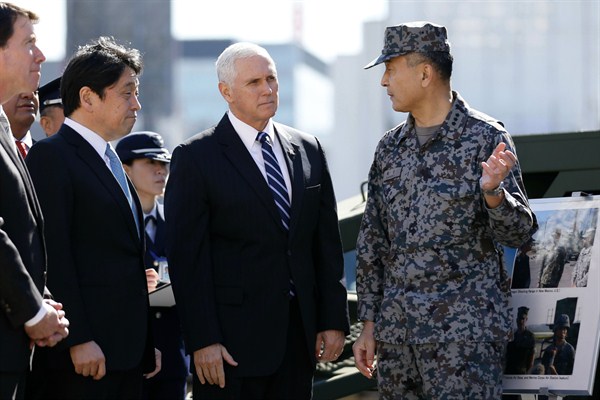On March 27, Japan announced an extensive reorganization of the main branch of its military, known as the Ground Self-Defense Forces. The government described it as the most sweeping revamp since the forces were founded in 1954. The restructuring includes integrating the five regional armies that make up the Ground Self-Defense Forces under a single command. While Japan’s postwar constitution restricted the country’s military capabilities, escalating threats from China and North Korea have raised concerns for Tokyo, and Prime Minister Shinzo Abe has taken steps to loosen the constitutional constraints. In an email interview, Michael Green, the senior vice president for Asia and the Japan chair at the Center for Strategic and International Studies in Washington, discusses Japan’s military revamp and the implications for its security alliance with the United States.
WPR: What changes did Japan recently make to its military, and what do they mean for its defense capabilities?
Michael Green: The recent change involves centralizing the ground component of the Self-Defense Forces, Japan’s military, to deal with new threats. There will now be a commander with operational control over all land forces, unifying the regional field armies into a more agile and flexible single formation. The more significant change may be the establishment of an amphibious brigade, which will use V-22 tiltrotor aircraft for rapid deployment to defend or retake smaller islands that an adversary, most likely China, might try to seize in the ongoing territorial disputes between Tokyo and Beijing. For a ground force that was constituted like the U.S. National Guard, this is a move to look, at least in part, more like the U.S. Marine Corps. The next step in Japan’s military reorganization could involve the establishment of a joint operational command with a single military commander able to deploy and control combined formations of ground, air and naval forces. This kind of joint command and control is standard for U.S., British or Australian forces, but would be new for Japan.

